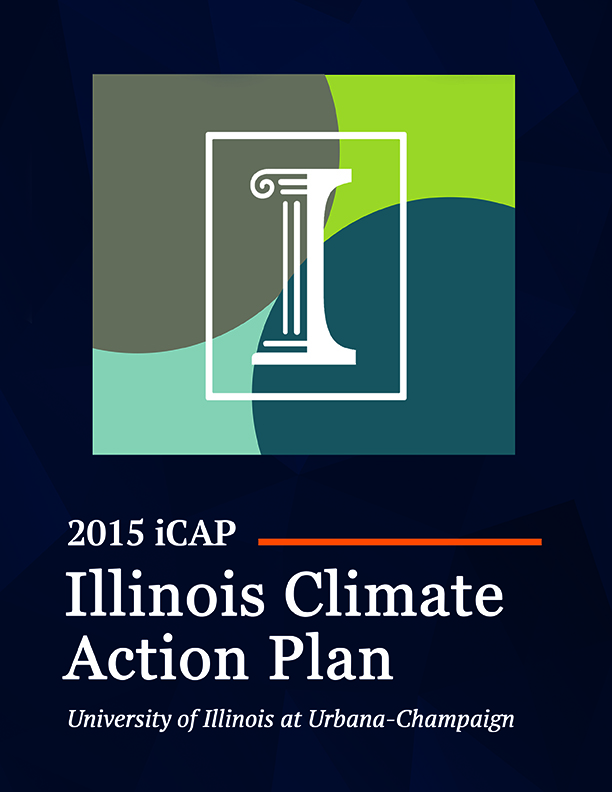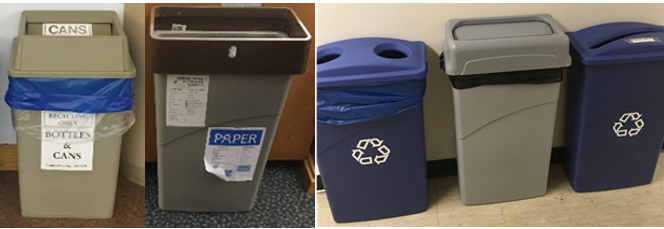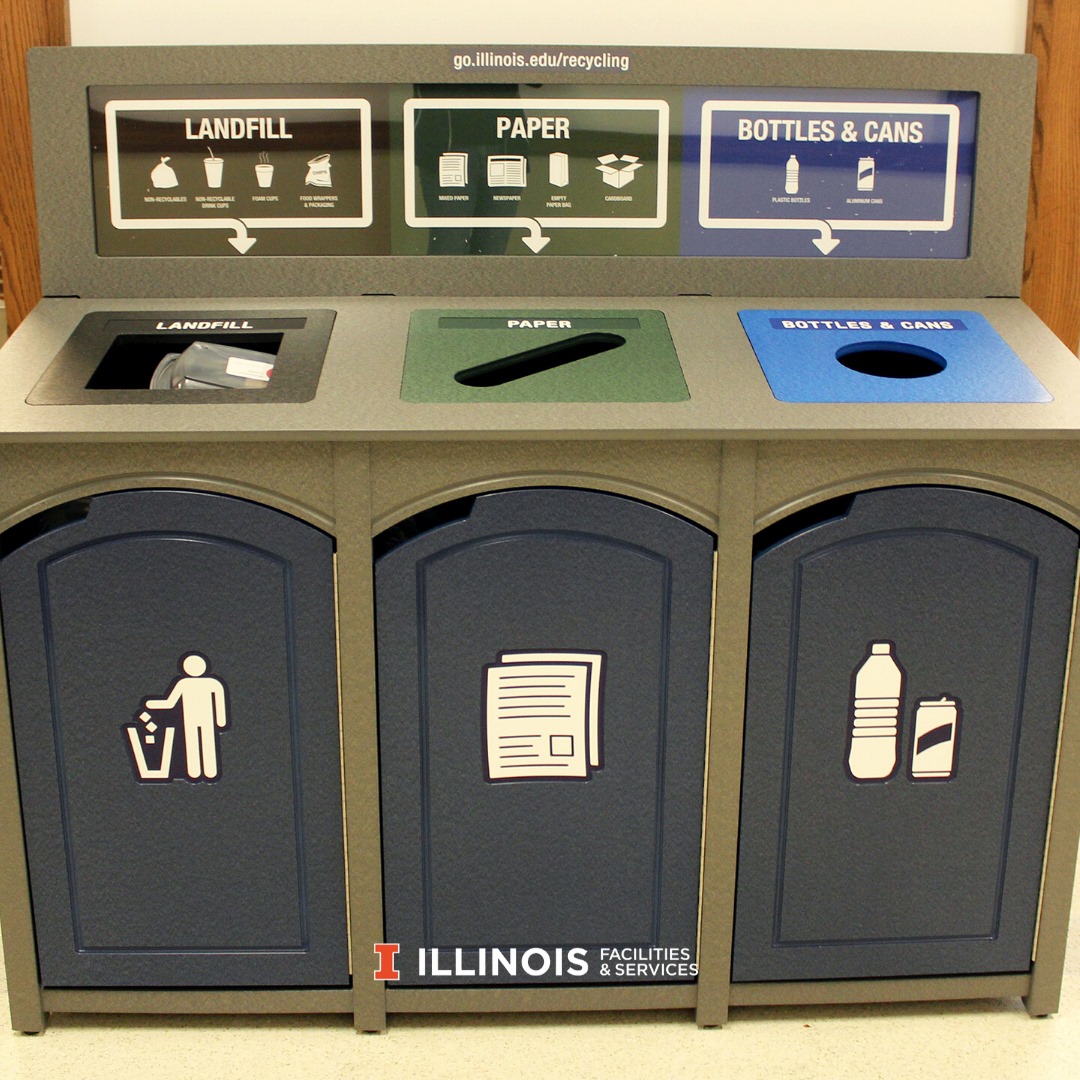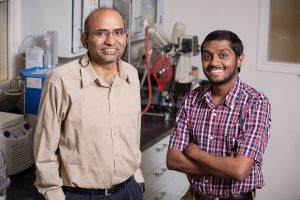History and context
In 2008, the University of Illinois at Urbana-Champaign (UI) signed the American College & University Presidents’ Climate Commitment, becoming part of a network of institutions of higher education committed to campus carbon neutrality by the year 2050. UI developed an Illinois Climate Action Plan (iCAP) as a roadmap to reducing the campus carbon footprint and achieving carbon neutrality. The iCAP identifies relevant goals, objectives, and potential strategies in the following categories: energy conservation and building standards; energy generation, purchasing, and distribution; transportation; water and stormwater; purchasing, waste, and recycling; agriculture, land use, food, and sequestration; carbon offsets; financing; education; outreach; and research.
 Since the development of the iCAP, the Illinois Sustainable Technology Center (ISTC) Technical Assistance Program (TAP) has worked with UI Facilities and Services (F&S) on multiple projects to facilitate achievement of a 45% campus waste diversion target by 2020, as part of the overarching campus carbon neutrality efforts. In 2014 and 2015, TAP gathered baseline data on the types and magnitude of waste generated on campus and identified opportunities for waste reduction, diversion, and improvement of material collection. The results of those efforts can be found in the 2014 Baseline Waste Characterization Study and the 2015 Recycling and Waste Reduction Opportunity Assessment. An educational project coincided with the second phase of this waste characterization effort, in which TAP staff guided UI students in the creation of a sculpture crafted from materials from the campus waste stream. The sculpture, along with campus waste characterization data and facts related to waste generation and management in the US, were displayed at the Krannert Center for Performing Arts during Earth Week in 2016, to raise awareness about campus materials management. In 2015, TAP also collaborated with F&S to retrofit existing refuse containers located on the main Quad, creating combined waste and recycling stations in an effort to improve capture of recyclable materials.
Since the development of the iCAP, the Illinois Sustainable Technology Center (ISTC) Technical Assistance Program (TAP) has worked with UI Facilities and Services (F&S) on multiple projects to facilitate achievement of a 45% campus waste diversion target by 2020, as part of the overarching campus carbon neutrality efforts. In 2014 and 2015, TAP gathered baseline data on the types and magnitude of waste generated on campus and identified opportunities for waste reduction, diversion, and improvement of material collection. The results of those efforts can be found in the 2014 Baseline Waste Characterization Study and the 2015 Recycling and Waste Reduction Opportunity Assessment. An educational project coincided with the second phase of this waste characterization effort, in which TAP staff guided UI students in the creation of a sculpture crafted from materials from the campus waste stream. The sculpture, along with campus waste characterization data and facts related to waste generation and management in the US, were displayed at the Krannert Center for Performing Arts during Earth Week in 2016, to raise awareness about campus materials management. In 2015, TAP also collaborated with F&S to retrofit existing refuse containers located on the main Quad, creating combined waste and recycling stations in an effort to improve capture of recyclable materials.
TAP has since collaborated with campus Waste Transfer Station (WTS) staff to increase diversion rates across campus, as well as improve the efficiency of current waste management operations. Key components of this collaboration have included the development of a streamlined materials tracking system, as well as analysis of material flows through and from campus buildings to the WTS, to identify opportunities for process improvement.
In 2018, TAP worked with F&S staff to digitize collection truck weight tickets and create a new online tracking portal. The portal, rolled out in December 2018, allows WTS staff to measure, analyze, and report on the material moving through the system. This level of detail can allow targeted modifications to hauling routes, pickup frequency, and collection container deployment to improve capture of specific waste streams, as well as provide data to inform potential outreach efforts and policy changes.
Recent efforts to improve collection of recyclables
In 2019, ISTC and WTS staff began an analysis of collection practices within buildings with the explicit intent to increase the capture of source-separated recyclables. TAP staff shadowed building service staff to identify current practices and opportunities for improvement. The processes for handling waste and recyclables for typical academic and residential buildings were mapped out, including movement of waste materials from the building to dumpsters, and ultimately to the WTS. TAP staff also worked with F&S to document (in terms of current deployment and unused inventory) the number and variety of landfill and recyclable collection bins found in buildings across campus.

This information allowed TAP to make various recommendations to UI F&S related to:
- building construction and renovation standards for recycling space allocation;
- collection container allocation, placement, and related training for Building Service Workers (BSW);
- updating collection containers to improve clarity and consistency across campus;
- improved signage for clarity and consistent messaging;
- use of bin liners and existing dumpsters to streamline material flows to, and separation at, the WTS; and
- a campus-wide recycling campaign.
TAP is currently working with F&S on implementation of these recommendations. At the end of 2019, new collection containers were identified which would collocate landfill (trash) bins and bins for the two types of recycling streams on campus—mixed paper and aluminum cans plus bottles. The new collections containers use color-coding to distinguish the different streams—black for landfill, green for the mixed paper stream, and blue for the combined aluminum cans and bottles. Matching directional signage featuring pictures of example materials appropriate for each waste stream attaches to the back of the bins to assist with proper source separation. A URL for more information on campus recycling is also prominent on the bin signs. Images on the container access doors (for emptying the bins) reinforce proper placement of materials. The containers are themselves constructed from at least 1000 recycled plastic milk jugs, reinforcing the importance of not only recycling but “closing the loop” by using products made from recycled materials.

105 containers have been deployed over 30 buildings, beginning primarily in first-floor hallways. Additional containers are being obtained and deployed to locations keeping factors such as building occupancy and status of currently existing collection infrastructure in mind. F&S sees the deployment of the new containers as a key factor in raising awareness of recycling opportunities and processes on campus, as well as combating persistent misconceptions about campus recycling practices.
The new collection containers and implementation of other recommendations made by ISTC’s TAP not only foster achievement of campus iCAP goals but also relate to the recently released F&S Strategic Plan 2019-2023, which includes key performance indicators for diverting waste from landfill in its “Lead in Energy Management and Sustainability” section.
For further information
- UI iCAP Portal Waste Characterization Study Phase 1
- UI iCAP Portal Waste Characterization Study Phase 2
- ISTC Blog: Sculpture to Raise Awareness of Waste Generation, Management During Earth Week
- ISTC Blog: Now There Is an “I” in Green, Art, and Krannert
- F&S Newsroom: New Collection Containers to Help Increase Recycling Efforts
- F&S Strategic Plan 2019-2023: Lead in Energy Management and Sustainability
- Members of the University of Illinois at Urbana-Champaign campus community who have questions about recycling should visit https://www.fs.illinois.edu/services/waste-management-and-recycling or contact recycling@illinois.edu.
- The ISTC Technical Assistance Program has also worked with other UI campus units on waste reduction and recycling efforts. For more information, see https://www.istc.illinois.edu/zerowaste or contact istc-info@illinois.edu.




 The team collected high-density polyethylene (HDPE) bags from local shops and used a pyrolysis unit to turn them into plastic crude oil (PCO). After distilling the PCO, analyzing the resulting fuels, and adding antioxidants, the products met nearly all specifications of the conventional diesel standards.
The team collected high-density polyethylene (HDPE) bags from local shops and used a pyrolysis unit to turn them into plastic crude oil (PCO). After distilling the PCO, analyzing the resulting fuels, and adding antioxidants, the products met nearly all specifications of the conventional diesel standards. Sanjeev Das, Global Packaging Director at Unilever,
Sanjeev Das, Global Packaging Director at Unilever, 